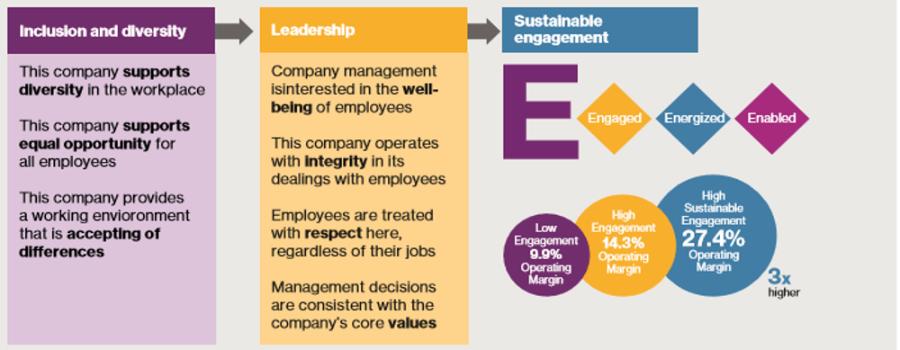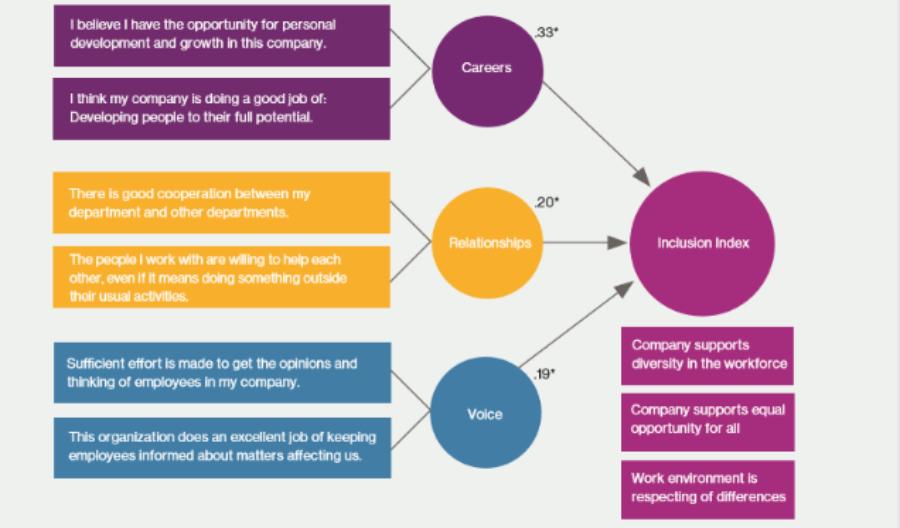One of the salient aspects that got discussed was changing demographics and new societal expectations of the future workforce. For the first time, the future workforce will be made up of five generations and women would now be the majority of those with higher education across most developed and developing economies. Additionally, there is greater expectation on the part of workers that workplaces will be inclusive of all genders, races, religious affiliations, identities, cultures, and physical abilities. Emerging evidence states that embedding Diversity and Inclusion as one of the core business priorities can result in significant business benefits.
Having said so, business leaders often approach I&D as a problem to solve. They respond to the compliance mandates for fairness in hiring, advancement and pay. It is mostly about meeting the minimum requirement. However, we see some leaders catching up to the realisation that diversity is also a ripe business opportunity.
The first step is Inclusion. Wherein Diversity is derived from a mix of demographics, skills and experiences, inclusion unlocks the potential of a diverse workforce. Inclusion is the extent to which all employees have an equitable experience in the organisation, regardless of personal identity or background. Hallmarks of an inclusive culture include a respectful environment where employees can be accepted for who they are, experience unbiased day-to-day interactions with peers and feel confident in the fairness of career opportunities.
Success depends on how extensively a company recruits, promotes and partners with people who have diverse identities and demographic backgrounds. Though this the first step of increasing diversity is important, but it is insufficient for reaping the touted benefits of varied perspectives and backgrounds. More comprehensive efforts are needed to create a culture in which all employees feel that they truly belong and are free to contribute their talents and achieve their personal goals at work. Put simply, diversity loses its power without inclusion.
Building a diverse and inclusive culture is a journey of many steps, but the payoff is clear: increased engagement and performance as highlighted by our Global studies (notably our Global Workforce Studies from 2014 and 2016) Driver analysis across the data collected demonstrated that employees who viewed the Inclusion items (shown in Figure below) more favourably were among the most likely to rate their senior leaders favourably. This is an important revelation, given that leadership effectiveness is the most common driver of sustainable engagement, which in turn has proven links to company performance. In other words, inclusion has an indirect but strong link to leadership effectiveness, engagement and performance that solidifies the business case for inclusion into an organisation’s broadest human capital strategy.

Willis Towers Watson Global Normative Database, 2014
To gain insight into the specific cultural drivers of Inclusion, we turned to the 350,000 respondents in our study. A profile emerged: “Included” employees see a future at an organisation, can work easily with others and feel their voices will be heard. The more included employees feel, the more likely they are to rate their senior leaders higher and be sustainably engaged. Based on these results, we can be confident that career opportunities, working relationships and open dialogue are concrete action areas for building an inclusive culture in any organisation.

Willis Towers Watson Global Normative Database, 2014, Variance explained is .35
*Each regression coefficient (xx) represents each opinion factor’s unique influence on the outcome, taking into account the impact of other factors.
To identify the opportunities for Culture change in different I&D current states, we sought to understand what was different about companies that excel at both inclusion and diversity versus struggling on either issue. To this end, we classified each company in the study as high versus low (top and bottom tertile) for both gender diversity and inclusion scores. “Diverse yet exclusionary” companies had the most female employees, including managers, but were overall less inclusive. “Inclusive yet homogenous” companies were less gender diverse but more inclusive, including among female employees and female managers. Comparing these company profiles can help leaders understand which workplace factors to prioritise according to their organisations’ particular struggles with diversity, inclusion or both.
Taking this context to India, we did a focused study with select 40 diverse Indian organisations and found the following on I&D trends:
At Willis Towers Watson, we believe that a culture of inclusion and diversity (I&D) is critical to our business. It's not a separate initiative in its own silo. Rather, I&D is fundamental to everything we do. How we hire and promote, how we work with clients and how our teams function. The reason is simple: Making tangible progress on I&D objectives is good business. I&D has a direct impact on our ability to grow and excel. That's why we're committed to creating an inclusive work environment where everyone is heard, respected and valued for who they are.
Based on our experience of living this I&D philosophy and also through our engagement with some of India’s most progressive organisations, here are some best practices to consider.
Finally, as many organisations seek to improve their diversity and inclusion practices, it is imperative that they learn from each other to accelerate the pace of change. Additionally, as policy-makers begin to regulate outcomes, there is an imperative for organisations to benchmark their performance externally. We expect to see indices emerging in this space.
This article was first published in BW People
| Title | File Type | File Size |
|---|---|---|
| Inclusion & Diversity - A business priority and not a good to do! | .3 MB |